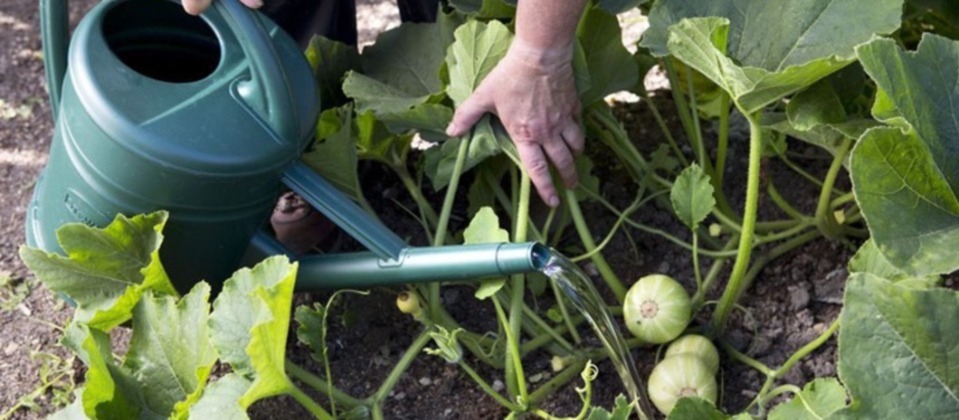It’s now over four weeks since we had any rain in York, as you will surely have noted. That’s bad for allotment holders, but disastrous for farmers growing field crops like wheat, barley and potatoes. Rain water butts will be long empty. Competition with fellow plot holders for a tap connection for hosepipes can get heated. How do we respond? By watering everywhere, watering anywhere, putting our heads in the ever drier soil?
It’s worth remembering the YACIO guidelines, which are that hosepipes should only be used to fill water butts, not to water the ground directly (unless you have a reason to be excepted from that rule). It’s a fairer system for everyone, but it’s also actually better gardening practice. Dampening the surface of your beds with water encourages the plant roots to come to the surface, exposing them to greater heat and drought. We need to encourage plants to get their roots down deep, to where the soil is cooler and there may be some dampness. Waving a hosepipe with spray attachment around just results in a large proportion of the water evaporating, and is no help to growing plants at all. And watering in the middle of the day is similarly wasteful and pointless: it’s best to water early morning or in the evening. The most effective approach is to use watering cans to direct the precious water to the most needy plants, not wetting the leaves as that may cause scorch and immediate evaporation, and watering the soil in a small area around each plant. The most needy plants are those that are fruiting imminently: peas and beans and soft fruits just now, courgettes, tomatoes and squash towards the end of the month.
Take a look at your soil in this dry time: is it looking dull and dusty, or beginning to harden and cake over, or even to crack? These are all signs that the soil is lacking sufficient body and bulk – and probably therefore nutrients too. Make a resolution to care better for your soil over the autumn, winter and early spring, making and applying as much compost as you can. Meanwhile, here and now, after watering apply whatever you can as mulch, and try not to have much bare soil at all. Collect grass cuttings, make another cut of comfrey, surround your courgettes with old woollies (no synthetics), and protect the soil from the drying sun and wind. In permaculture systems, there’s a very effective technique of ‘chop and drop’, whereby you leave your pulled weeds on the surface of the soil to protect it; any resulting seedlings are easy enough to hoe off later in the year.
And on the subject of weeds, have you tried eating some of them? We are still in the hungry gap, and fresh greens are at a premium. Many so called weeds are really rich in valuable minerals, as well as being tasty. Make sure you use a good guide to what is and isn’t edible, of course, but enjoy surprising harvests to enhance your meals. Fat hen (in the family Chenopodicaeae, like some spinaches) is fresh and succulent just now, and there’s a very attractive red leaved one to add colour to your salads or cooked very briefly like young spinach. Likewise sorrels (including a red veined one), dandelion leaves (rich in potassium), and chickweed. And there are lovely flowers to eat too: bright orange and yellow calendula and nasturtiums, and the starry blue flowers of borage, and of course lovely elder flowers. So even if your crops are slow to come in this hard dry time, there will be some good eatings to be had on your plot.


